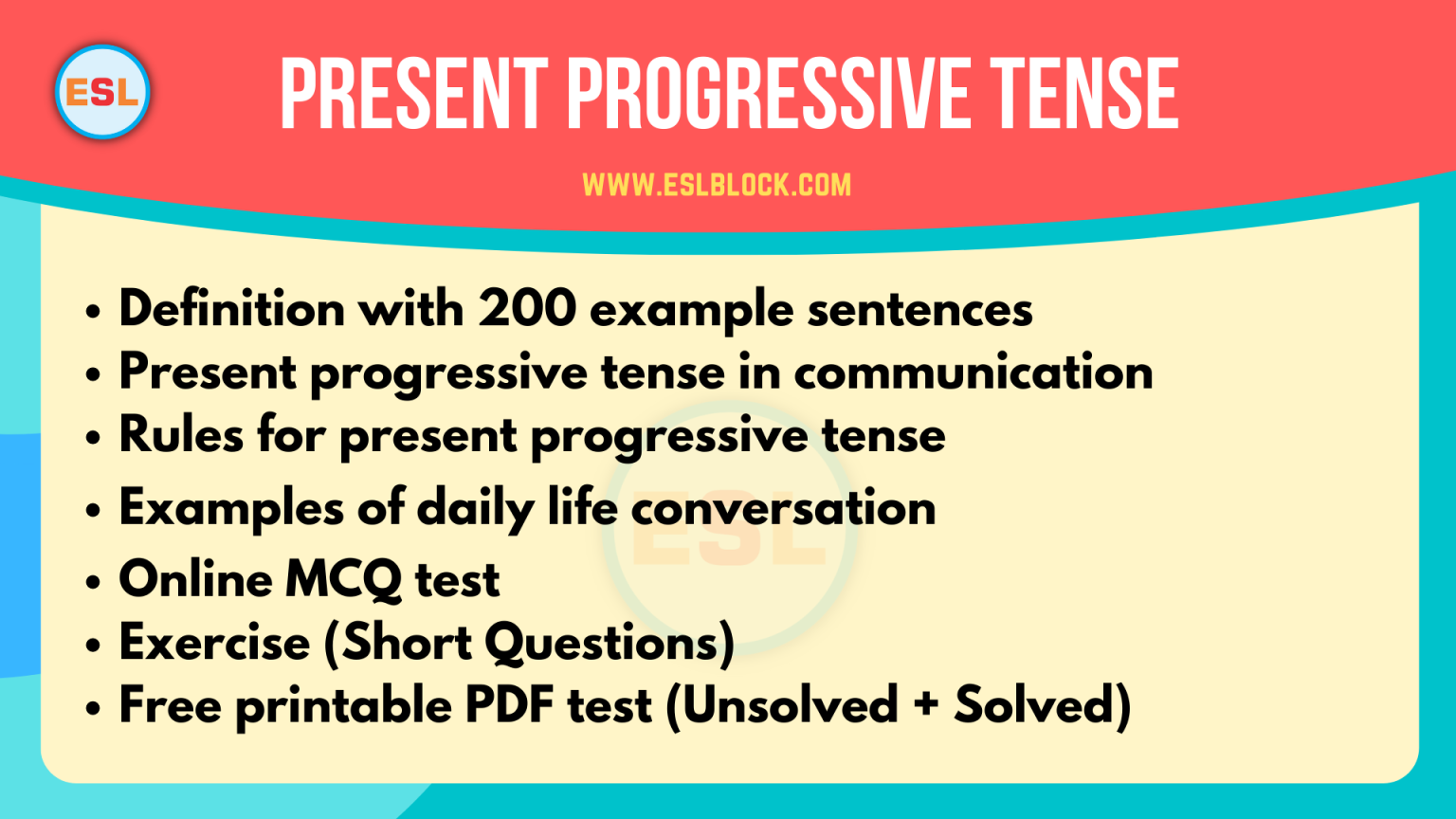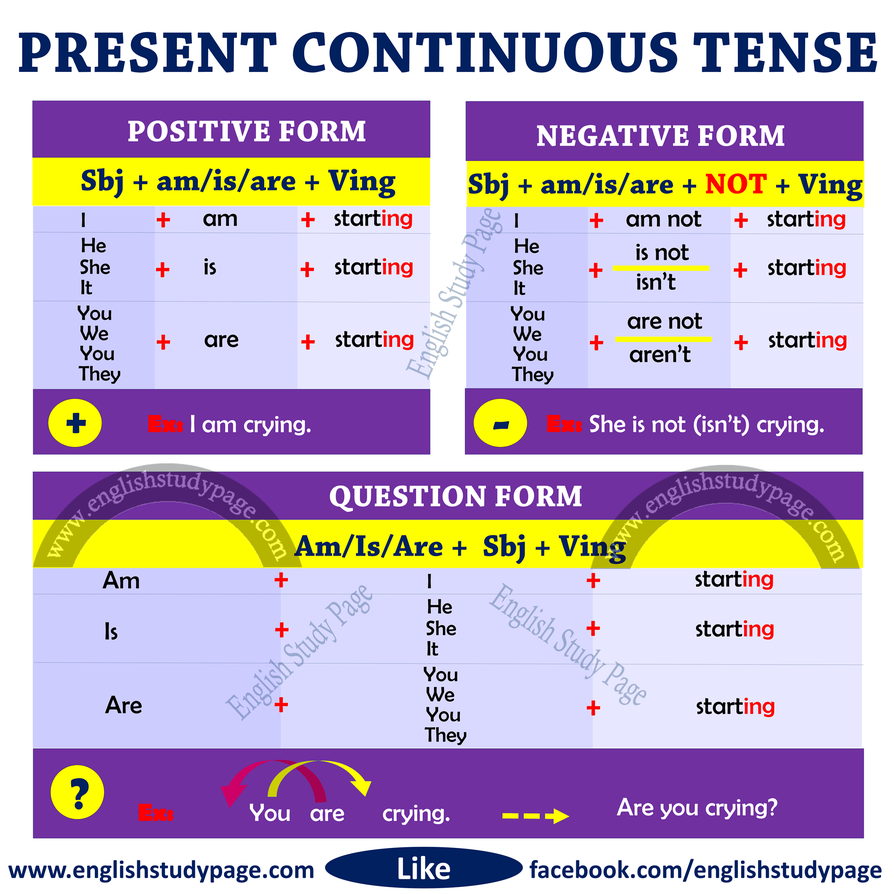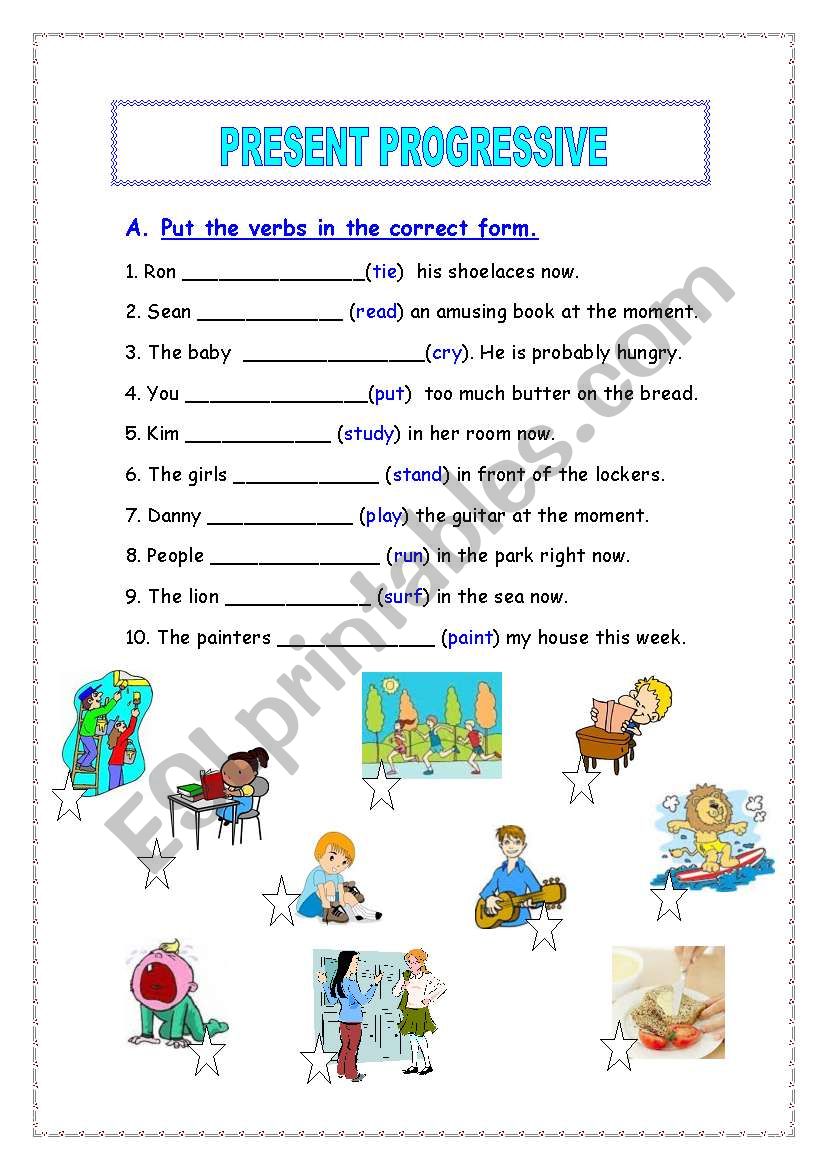
Dibujos (ejercicio) … Language therapy activities, Spanish language learning, Teaching english
Le présent progressif en anglais : grammaire anglaise / définition. Approfondissez votre maîtrise de Le présent progressif: définition et utilisation. Améliorez votre grammaire anglaise grâce à Gymglish. Test gratuit et sans engagement.

PRESENT PROGRESSIVE grammar guide English ESL powerpoints
at seven. Look, the kids to the zoo. We every Tuesday. Complete the sentences. Decide if you need to use the simple present or the present progressive. (he/wear/a hat/often) , but (he/not/wear/a hat) today. (we/have/breakfast/now) although (we/not/have/breakfast/normally) at this time. (while/Grace/clean/the house) , (her kids/play/in the garden) .

Present Progressive in English Grammar YouTube
The present progressive puts emphasis on the course or duration of an action. The present progressive is used for actions going on in the moment of speaking and for actions taking place only for a short period of time. It is also used to express development and actions that are arranged for the near future. Present progressive is also known as.

Present Progressive grammar guide English ESL powerpoints
The present progressive with always (forever, constantly etc) is often used for irritating habits but it can be used in other ways too. For example, it can be used to show something we find endearing or worrying as in your example B. It's context-dependent, of course, and the tone of voice or comments like 'it's so funny' signal the speaker's.

Present Progressive Tense Definition With Examples English as a Second Language
The present progressive tense is formed like this: "am," "is," or "are" + [present participle (" verb -ing")] Choose "am," "is," or "are" based on the following table: For example: She is running. I am talking. Forming the Present Participle The [verb] + "ing" part is known as a present participle. It is formed like this: Add "ing" to most verbs:

Share
The present progressive, also called the present continuous, is formed with the verb BE conjugated in the simple present followed by a present participle. This is the formula: ing ). Before you continue, review these lessons: Verb BE Present participle. en español en français. Here are some example sentences.

Present Simple Of Progressive English Esl Worksheets For EBC
Présent progressif COURS Le présent Be + ing : Formes Il se forme avec Be au présent et la base verbale terminée par -ing. Pour obtenir la forme affirmative, il suffit de mettre le sujet + be (conjugué) et le verbe en -ing Ex : She is play ing. Pour obtenir la forme interrogative, il suffit de faire l'inversion : l'auxiliaire passe avant le sujet.

Examples Of Present Progressive Tense In French CINEMAS 93
To form the present progressive tense, use the appropriate present form of the verb "to be" in front of the present participle (the "-ing" form of the verb). "I am waiting for a friend.". "So, you are thinking about quitting.". "The elephant is disappearing from the wilds of Africa.". "We are usingless paper in our office.

PRESENT PROGRESSIVE grammar guide English ESL powerpoints
1. Questions without question words in the Present Progressive 2. Questions with question words in the Present Progressive Use is with the 3rd person singular (he, she, it), am with the 1st person singular (I) and in all other persons are. Add -ing to the infinitive. Explanation Present Progressive/Continuous (Summary)

When to use present progressive Grammatica inglese, Inglese, Imparare inglese
Former le présent progressif en anglais Le présent progressif de n'importe quel verbe est composé de deux parties : le verbe to be au présent + le participe présent du verbe principal. (La forme du participe présent est: base+ing, par exemple talking, playing, moving, smiling)

PRESENT PROGRESSIVE general grammar… English ESL powerpoints
Simple Present Present Progressive; actions that occur in a sequence. Example: They take a taxi to the station, check the timetable and get on the train.: actions that are in progress at the moment of speaking. Example: The Smiths are going on holiday. At the moment, they are standing in front of the time table.: actions that occur according to an official schedule or programme

PRESENT PROGRESSIVE grammar guide English ESL powerpoints
The present progressive, also known as the present continuous tense, is formed with the verb be and the present participle or -ing form of the main verb. We use this tense to talk about actions that are in progress at the time of speaking and temporary actions. We can also use the present progressive to talk about future arrangements and plans.

Present Progressive Sketchnote Unterrichtsmaterial im Fach Englisch in 2020 Sketch notes
Simple Present Present Progressive; infinitive (3rd person singular: infinitive + 's') I speak you speak he / she / it speaks we speak they speak. form of 'be' and verb + ing . I am speaking you are speaking he / she / it is speaking we are speaking they are speaking. Exceptions: Exceptions when adding 's' : For can, may, might, must, do not add s.

PPT Progressive Tenses PowerPoint Presentation, free download ID4757135
Present Continuous / Present ProgressiveSubscribe and check my other videos based on English Grammar: * Third Person - http://www.youtube.com/watch?v=bm1-ogD.

Present Continuous / Present Progressive Idioma inglês, Línguas, Idioma
1) Use the Present Simple for Habits: "I study English every day". When we talk about actions that happen usually, often, or every day, we use the present simple. For example: John works at a bank. My father smokes cigarettes. John works at a bank. Maybe he isn't working now (maybe he is sleeping now), but usually he works at a bank.

Present Continuous Tense in English Present Continuous Tense indicate an action which is in
Le "present progressive" est une construction grammaticale typiquement anglaise, que l' on ne retrouve pas en français. Appelé également présent continu, le présent progressif se forme à partir du verbe « to be » conjugué au présent simple, et du verbe exprimant l'action suivi du suffixe « ing ».